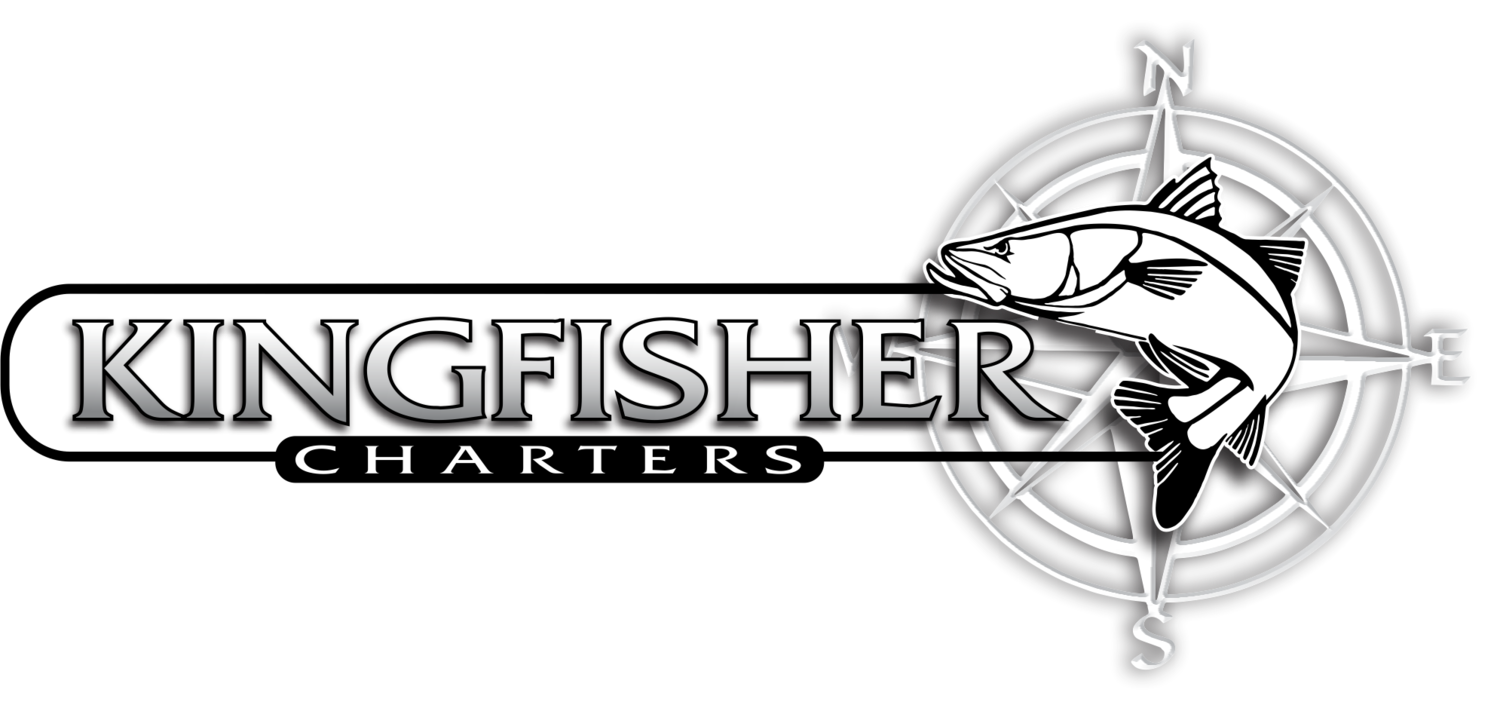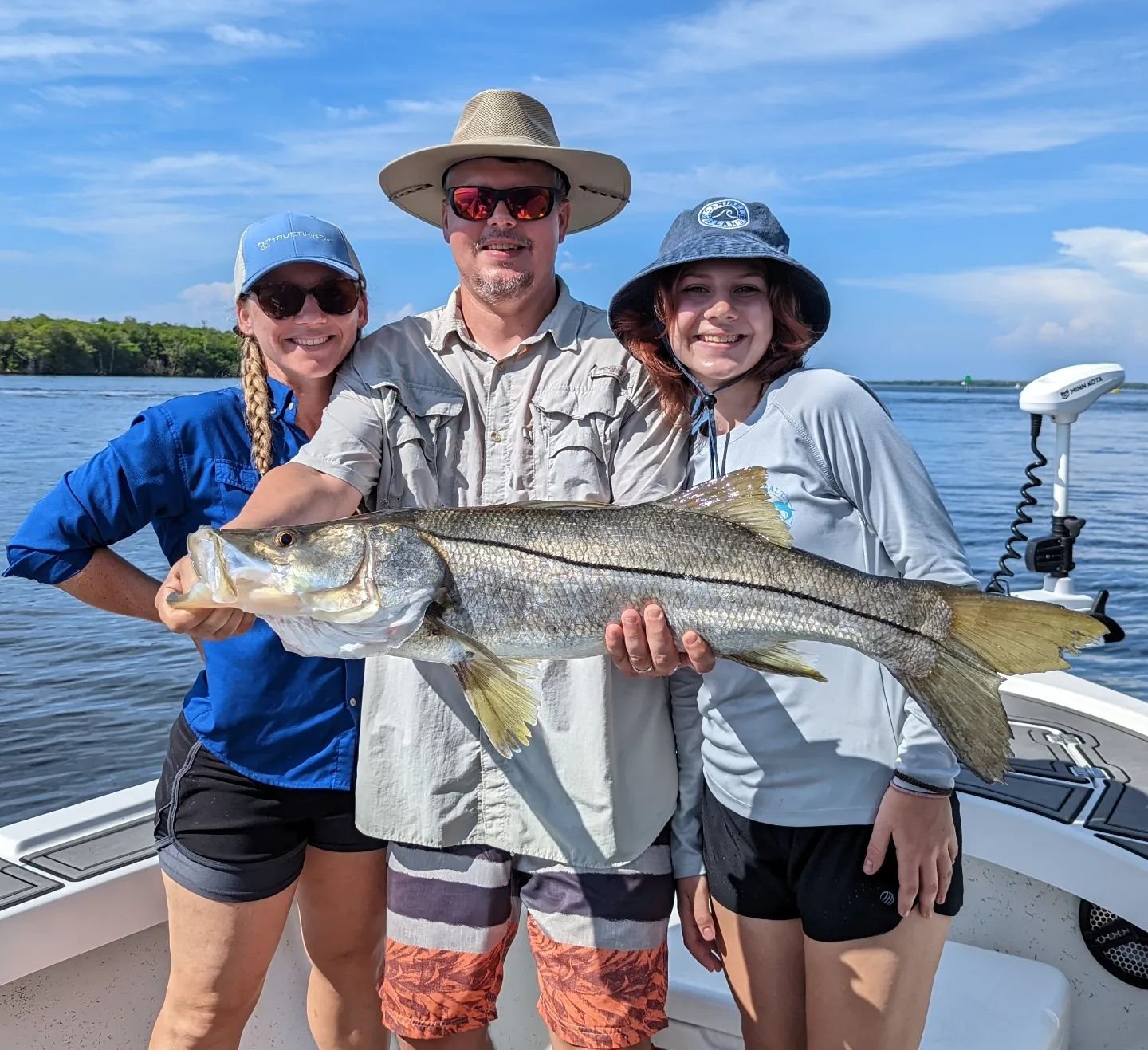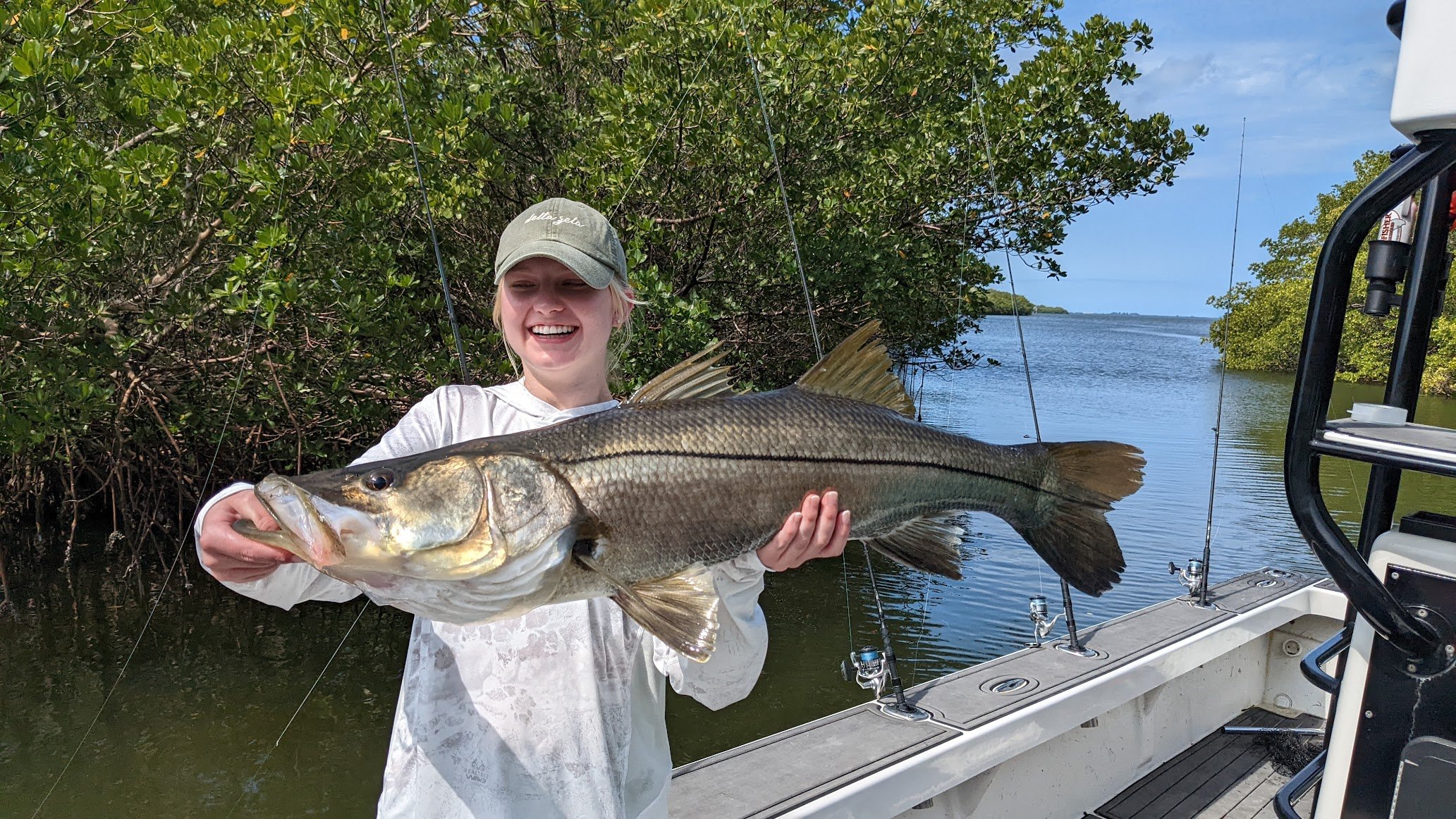In the fishing community of Southwest Florida, particularly around the inshore waters of Sanibel, Captiva, and Ft. Myers, there's a shared understanding that fishing here is more than just a leisure activity – it's a craft, honed by time and tide. These shores are not just lines on a map but the gateways to some of the richest fishing grounds the Gulf Coast has to offer. Here, 'inshore slam' isn't just a term; it's a testament to the skill and patience of anglers who understand the subtle art of fishing these diverse waters.
In this guide, we're stripping things back to the essentials – no fluff, no overblown descriptions. Just solid, useful information for anyone looking to navigate these waters with a rod and a plan. Sanibel, Captiva, and Ft. Myers are jewels in the crown of Southwest Florida's fishing scene, each offering its unique blend of challenges and rewards. Whether you're stalking the elusive snook in the shadowy backwaters, casting for spotted sea trout in the grass flats, or chasing the powerful redfish along the oyster bars, these waters demand respect and understanding.
We're here to talk about the real experience of fishing in Sanibel, Captiva, and Ft. Myers. This means getting to know the rhythms of the tides, understanding the habitats of your target species, and respecting the unspoken rules that seasoned anglers follow. It's about preparation, patience, and the thrill of the catch. Whether you're a seasoned local angler or a first-time visitor with a passion for fishing, this guide is your compass to navigating the inshore slams of Southwest Florida.
Gear up and get ready to delve into a world where every cast tells a story, and every catch carries the weight of tradition and skill. Welcome to your comprehensive guide to the inshore slams of Sanibel, Captiva, and Ft. Myers – where the waters are teeming with life, and every fishing trip can turn into an adventure.
Understanding the Inshore Slam
In the heart of Southwest Florida's fishing scene, the term 'inshore slam' holds a place of honor, a goal that every angler in these waters aspires to achieve. But what exactly is an inshore slam? It's not just a catchy phrase; it's a milestone, a testament to an angler's skill and understanding of the inshore ecosystem.
An inshore slam is the successful catch of three specific fish species in a single day, within the same trip. The prized trio in the waters of Sanibel, Captiva, and Ft. Myers typically includes the snook, the redfish, and the spotted sea trout. Catching these three fish is not just about luck; it's about understanding their unique behaviors, habitats, and feeding patterns.
- Snook (Centropomus undecimalis): Known for its distinctive body shape, powerful fight, and elusive nature, the snook is a prized catch for any angler. These fish are often found around mangrove shorelines, docks, and other structures. They are smart, selective, and require a well-thought-out approach to successfully hook.
- Redfish (Sciaenops ocellatus): Renowned for their stamina and the distinct spot or spots on their tail, redfish are a thrilling catch. They are commonly found in shallow waters, especially around oyster bars, grass flats, and mangrove roots. Anglers often sight-fish for redfish, a technique that requires stealth, precision, and an understanding of the fish's feeding habits.
- Spotted Sea Trout (Cynoscion nebulosus): This species is known for its voracious appetite and the distinctive spots that dot its sleek body. Spotted sea trout are often found in seagrass beds and shallow flats. They are aggressive feeders, making them a fun catch for anglers who know how to entice them with the right movements and bait.
Achieving an inshore slam is a memorable accomplishment, a story worth sharing among the fishing community. It's a challenge that tests your knowledge, adaptability, and respect for the inshore environment and its inhabitants. As we delve further into this guide, we'll explore the habitats, behaviors, and effective fishing techniques for each of these coveted species, providing you with the knowledge you need to pursue your own inshore slam in the waters of Sanibel, Captiva, and Ft. Myers.
Snook
Snook stand as one of the most prestigious catches in the inshore waters of Southwest Florida, particularly around Sanibel, Captiva, and Ft. Myers. Known for their elusive nature and remarkable fighting spirit, these fish are not just a catch; they're a fisherman's trophy, a badge of honor. Let's dive into the world of the snook, understanding their habits, habitats, and how you can increase your chances of landing one of these formidable opponents.
Habitat and Behavior
Snook are commonly found in the warm, sheltered waters of mangrove shorelines, docks, and pilings. They favor areas with structure, where they can ambush prey and seek refuge from larger predators. These fish are also known to inhabit brackish waters, often venturing into freshwater systems, which adds to their mysterious allure.
Their behavior is dictated by the tides, water temperature, and availability of prey. Snook are most active during the warmer months, and they tend to feed more aggressively during the early morning or late evening. However, they can be notoriously picky, often ignoring offerings that don't match their current preference.
Tips for Targeting Snook
- Understand the Tides: Snook feeding patterns are closely tied to the tides. Learn how the movement of water in your chosen fishing spot affects snook behavior. Typically, incoming tides bring snook closer to shorelines and mangrove roots in search of food.
- Stealth is Key: Snook are wary and can be easily spooked. Approach your fishing spot with minimal noise and disturbance. Use a quiet trolling motor or push pole to navigate the shallow waters where snook may be hiding.
- Right Time, Right Place: Focus your efforts during the early morning or late evening when snook are most active. Additionally, snook tend to congregate near structures during the hottest parts of the day, seeking shade and cooler waters.
- Match the Hatch: Pay attention to the type of prey that is abundant in the area. Whether it's small fish, shrimp, or crabs, matching your bait or lure to the natural diet of the snook increases your chances of attracting their attention.
- Prepare for the Fight: When you hook a snook, be ready for a battle. These fish are known for their strength and acrobatic jumps. Use a sturdy rod with a good backbone and a reel with a smooth drag system to handle their powerful runs and sudden changes in direction.
Redfish
In the Southwest Florida's inshore fishing scene, the redfish stands out as a formidable opponent. Known for their unmistakable spotted tails and robust fighting spirit, these fish are a favorite among anglers in Sanibel, Captiva, and Ft. Myers. To successfully hook a redfish is to earn a badge of honor in the local fishing community. Let's delve into the world of the redfish, exploring their habitats, behaviors, and the strategies that can increase your chances of a successful catch.
Habitat and Behavior
Redfish are most commonly found in shallow, inshore waters. They have a particular fondness for areas with oyster bars, grass flats, and mangrove roots, where they can easily hunt for food and find shelter from predators. These fish are well-adapted to a variety of salinity levels, often venturing into fresher waters of estuaries and rivers.
One of the most distinctive behaviors of redfish is their tendency to "tail" in shallow water. This occurs when they feed on the bottom, often exposing their tails above the water surface. Spotting a tailing redfish can be a thrilling sight and an invitation for anglers to make a well-placed cast.
Tips for Targeting Redfish
- Look for Signs: Keep an eye out for tailing redfish, especially in shallow flats during low tide. Also, watch for wakes or shadows moving in the water, as these can indicate the presence of a school.
- Approach Quietly: Stealth is crucial when targeting redfish, as they can be easily spooked. Approach potential fishing spots slowly and quietly, using a push pole or trolling motor to minimize disturbance.
- Use Natural Bait: Redfish are opportunistic feeders, but they have a particular preference for live bait like shrimp, crabs, and small fish. Presenting a natural bait in a way that mimics its normal behavior can be highly effective.
- Consider the Tides: Redfish are known to follow the tides in search of food. Fishing during moving tides, particularly incoming tides, can increase your chances of encountering these fish as they feed actively.
- Be Prepared for the Fight: Redfish are known for their strength and persistence. Ensure your gear is up to the task, with a strong rod and a reel capable of handling their powerful runs.
Spotted Sea Trout
Known for their sleek, spotted bodies and aggressive feeding habits, these fish offer a dynamic fishing experience. Anglers who understand the subtleties of the Spotted Sea Trout's behavior and preferences are often rewarded with not just a great catch but an exhilarating fishing adventure. Let's explore the habitat, behavior, and effective fishing strategies for the Spotted Sea Trout.
Habitat and Behavior
Spotted Sea Trout, or speckled trout, thrive in the inshore waters, favoring areas rich in seagrass beds and shallow flats. These habitats provide ample cover and abundant food sources, making them prime fishing spots for anglers. The Spotted Sea Trout is particularly known for its voracious appetite, often feeding on small fish, shrimp, and crustaceans.
One notable behavior of the Spotted Sea Trout is their schooling nature, especially during their spawning season. They can be found in large numbers, which can make for an exciting and fruitful fishing experience. However, their keen senses and swift movements require a thoughtful and precise approach from anglers.
Tips for Targeting Spotted Sea Trout
- Early Bird Gets the Trout: Spotted Sea Trout are most active during dawn and dusk. Planning your fishing trips around these times can significantly increase your chances of a successful catch.
- Focus on the Grass: Look for areas with healthy seagrass beds or shallow flats. These are the preferred feeding grounds for Spotted Sea Trout. Casting your line near the edges of these areas can yield good results.
- Be Mindful of Your Bait: These fish are primarily attracted to live bait like shrimp and small fish. Using artificial lures that mimic the movement and appearance of these prey can also be effective, especially if they produce a subtle, natural vibration in the water.
- Stay Stealthy: Despite their aggressive feeding habits, Spotted Sea Trout can be easily spooked. Approach your fishing spots with minimal noise and avoid sudden movements. A quiet trolling motor or a silent drift can be your best approach.
- Set the Hook Gently: Spotted Sea Trout have a relatively soft mouth, which means that a too-aggressive hook set can result in a lost fish. A firm, steady pressure is usually enough to secure your catch.
The Ultimate Inshore Slam with Kingfisher Charters
Securing the elusive inshore slam - snook, redfish, and spotted sea trout - all in a single day is a thrilling challenge, and one that requires not just skill and patience, but also an intimate knowledge of the local waters. In the vibrant fishing grounds of Fort Myers, Sanibel, and Captiva, this isn't just a possibility; it's an adventure that awaits with the right guidance. Enter Kingfisher Charters, your expert companion in navigating these fruitful waters.
Captain Pat and the team at Kingfisher Charters are not just guides; they are custodians of the local fishing lore, with an in-depth understanding of where and when to fish. Opting for a charter service like Kingfisher not only enhances your chances of achieving the coveted inshore slam but also transforms your fishing journey into a seamless, enjoyable experience.
Why Choose Kingfisher Charters?
- Local Expertise: With Captain Pat at the helm, you're not just exploring the waters; you're learning the secrets that only local experts know. This insider knowledge is invaluable when you're targeting species as challenging as snook, redfish, and spotted sea trout.
- Customized Trips: Whether you're an early bird keen on a 3-hour trip or looking for a full 8-hour immersion, Kingfisher Charters tailors the experience to your preferences. Every trip is an opportunity to target the inshore slam under the guidance of seasoned professionals.
- Top-Notch Equipment: With fishing licenses, top-of-the-line rods and reels, bait, tackle, and even a cooler full of ice and bottled water included, all you need to bring is your passion for fishing. Kingfisher Charters ensures a hassle-free experience, focusing on the thrill of the chase.
- Versatile Offerings: While the inshore slam is a sought-after achievement, the waters around Ft. Myers, Sanibel Island, and Captiva have more to offer. Kingfisher Charters also provides nearshore reef & wreck trips and even specialized tarpon & shark trips, each promising a unique and memorable fishing adventure.
Achieving an inshore slam is a memorable feat, a story that you'll recount for years to come. With Kingfisher Charters, you're not just hiring a service; you're partnering with local fishing aficionados who are as invested in your fishing success as you are. Every cast is a narrative in the making, every catch a testament to the synergy between angler, guide, and the vibrant Southwest Florida waters.
Ready to embark on your inshore slam journey? With Kingfisher Charters, the waters of Fort Myers, Sanibel, and Captiva are yours to explore, and the inshore slam is a dream within reach. Start planning your adventure and get ready to cast your line where the waters are teeming with tales waiting to be told.






